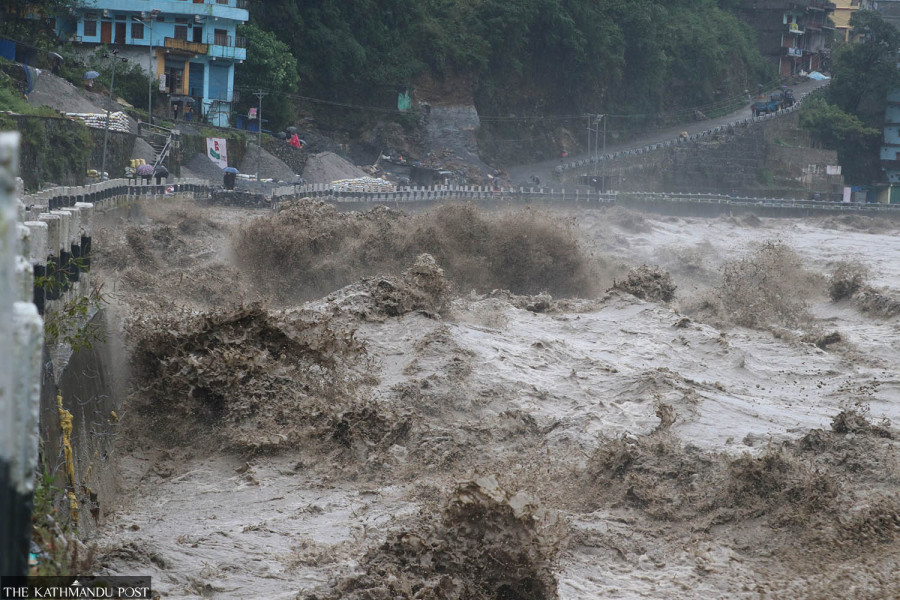Editorial
Until something happens
No matter how effective it is, disaster response and rehabilitation is just not enough.
If the spate of traffic accidents resulting in the deaths of dozens of people in the middle of Dashain celebrations was not enough, the post-Dashain days have remained a gloomy affair as heavy rains wreaked havoc across the country. As of Wednesday, the death toll reached 77, and dozens are missing as the eastern and far western districts have been inundated. Photos of water filling up at Biratnagar airport and cutting land in Mahendranagar have reflected the extent of heavy rainfall that crossed the 500 mm mark in 24 hours.
Apart from the loss of human lives, the rains and landslides have also caused a tremendous loss of property, livestock and agricultural produce. Many farmers across the country have been distressed as thousands of hectares of ready-to-harvest paddy have been submerged in water, leaving them to wonder how they will repay the debt incurred during planting, and how they will feed themselves in the coming months.
The sudden change of weather long after we have left the monsoon madness behind has surprised us all. But if in a country like ours that suffers from floods each year, we are severely under-resourced to deal with an emergency like this, we ourselves are to blame, for it shows how little we have done towards natural disaster resilience. The current crisis has demonstrated that natural disaster is not a seasonal affair, and that it has to remain a priority throughout the year. The government should revamp its natural disaster forecasting measures to ensure that communities get enough time to shift to safer locations.
As is the ritual after each major disaster, Prime Minister Sher Bahadur Deuba has directed government mechanisms to get their act together and begin rescue and rehabilitation efforts. Deuba’s directive gives away the inefficiency of concerned government institutions, as their job is precisely to prepare for disasters in advance, and begin rescue and rehabilitation efforts without waiting for orders or promises of financial resources from higher-ups. Rather than await directives in the aftermath of the disaster, government institutions tasked with handling crises should, in coordination with other stakeholders, remain disaster ready at all times.
Government institutions should prepare in advance to help minimise the damage caused by natural disasters such as floods and disasters and help communities get back on their feet as soon as possible after such tragedies. It is also necessary to ensure financial preparedness so that they are not burdened with the need to scramble for resources in the event of calamities. The severe lack of insurance schemes to cover losses means that communities are left high and dry when they lose life, livestock and property to natural disasters. To change this, the government should solidify and expand its insurance programmes.
But no matter how effective it is, disaster response and rehabilitation is just reflexive action. The question that needs to be addressed first and foremost is: What measures have we followed to ensure that what we call human activities do not induce natural disasters? The mushrooming of physical infrastructures in the hills and riversides has increased the risk of floods and landslides, causing significant damage to life, livelihood and property. Little has been done to stop the interruption of the natural course of water and excessive extraction of natural resources for commercial purposes, leading to the vulnerability of people living around the river basins. This should be an occasion for us to rethink the very idea of natural resource usage.




 7.12°C Kathmandu
7.12°C Kathmandu












%20(1).jpg&w=300&height=200)

